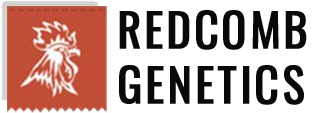Warren Hall, Broughton, England, the headquarters in the 1990’s
British United Turkeys Ltd (B.U.T.) was incorporated in 1962 and was founded by Rupert Chalmers-Watson whose family had built up a turkey breeding and production business at Fenton Barns in East Lothian, Scotland. Mr Chalmers-Watson had also been involved in the establishment of Chunky Chicks (Nichols) Ltd and when the company, within E.F. Fairbairn Holdings Ltd, was taken over by the Ross Group in 1962 he had time to set up a new business, although retaining a seat on the Board of the Ross Group. In 1961 George Nicholas and Mac Cuddy visited Britain with the view to establish a relationship with an attractive turkey breeder in the U.K.
After discussions with the visitors It was decided to set up a new company within the U.K. combining together three British companies Fenton Barns, John S. Lintern Ltd and Hockenhull Turkeys, together with Turkey Research and Development, in which Nicholas Turkey Breeding Farms was a shareholder. The British companies were growers and processors with Fenton Barns and Hockenhull Turkeys also conducting their own breeding programs. The Fenton Barnes program had been managed by Dr George Clayton of Edinburgh University who became the BUT’s consultant geneticist.
The aim of the company was to operate large scale genetic programmes and to sell breeding stock on a franchise basis to breeders in the UK and Europe. Attempts were made to set up an Italian branch of BUT, but this was soon closed. In 1964 an attempt was made to supply the Russians with breeding stock but after initial contacts at Kiev Poultry Fair the venture was unsuccessful. Cooperation within the company continued with the exchange of breeding lines between BUT and Nicholas. At the outset the products were Large Bronze and Large white turkeys. By 1965 the demand for bronze had collapsed.
However the company had achieved eradication of Mycoplasma Gallisepticum (Mg) and was able to supply the industry with Mg-free large and medium size breeding stock as the Triple 6 (large) and Triple 5 (medium). BUT continued to process stock for the retail market but this was phased out so they were no longer competing with their customers. After the settling in period the company structure was reviewed and Hugh Arnold became the first managing director in 1966. Soon afterwards management consultants advised a professional company management and Mr Mo Hawkins was appointed as commercial director in 1968 with the view to take over as Managing Director. Continuing health problems in the breeding stock lead to the construction of a new production system in Cheshire and this was to play a significant role in the success of the business in the 70’s and 80’s. A new shipment of BUT strains was sent to Nicholas in California in 1972 but problems arose with their performance and a year later Nicholas withdrew from the company and each continued independently; Nicholas then set up a European branch in Scotland as Nicholas Europa.
Towards the end of the 70’s new products were introduced to replace the Triple 6 and triple 5, these were the Big 5, Big 6, B.U.T. 8 and B.U.T. 9. As a consequence of the performance improvements BUT market share increased. In 1978 the company was approached by Hubbard Farms itself a subsidiary of Merck and Co Inc. with the view to acquisition. This was completed by the end of the year. The last step in expansion to establish itself as a breeder on equal footing with Nicholas was the building in 1982 of a subsidiary in the USA titled B.U.T.A. The operation in North Carolina and West Virginia were built to supply 40% of the USA market. The products available to the American customers were the BUTA Big 6, the BUTA 9 and BUTA 37 Roaster.
Further expansion in Europe was possible by the construction of a breeding facility in France in 1985. And so in 1997 after 35 years in business the company had achieved a 50% share of the global market.


